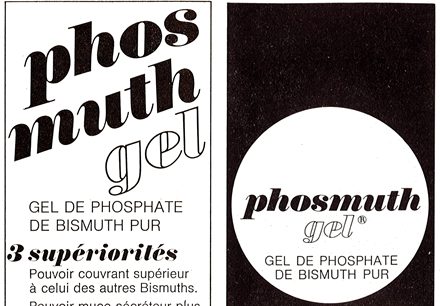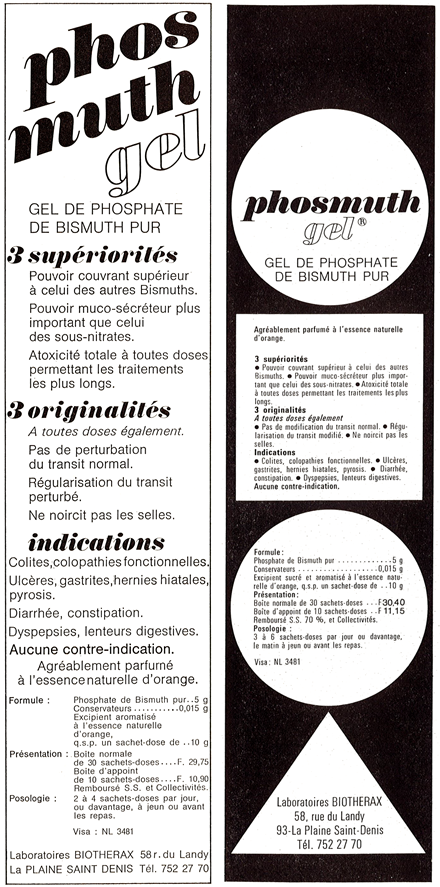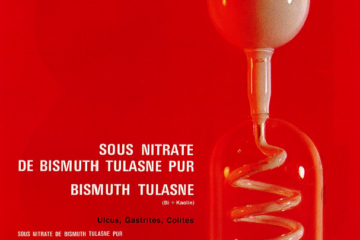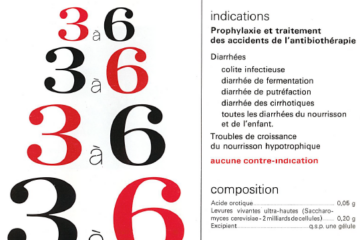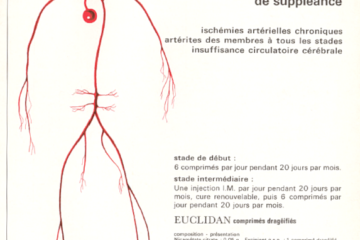The gastro-protective effect of bismuth drugs is known for a long time. The first use of bismuth subnitrate in the treatment of dyspepsia can be traced back to 1786 by the Swiss physician Louis Jean Odier (1748-1817). For a long time, bismuth salts have been used as medicines, notably bismuth aluminate (antiacid), bismuth chloride oxide (antisyphilitic) or bismuth iodosubgallate (antimirobial, notably for the treatment of Helicobacter pylori infection). Several bismuth salts have been used as antiacid products, like bismuth subnitrate (BSN) and bismuth phosphate (BiPO4) which is a colloidal agent used in the late 1960s for the treatment of colitis, gastritis, ulcers, diarrhea, and digestive disorders in general. Notably, the drug Phosmuth was promoted for the treatment of the peptic ulcer disease.
In the early 1980s, bismuth phosphate has been used as a sclerosing agent to treat simple renal cysts by percutaneous puncture and instillation of the product. It has been used also to treat testicular hydroceles; it worked well without inducing organic dysfunctions. But like other bismuth salts, its use has fallen into disfavor in the 1980s because of the potential adverse effects of bismuth-containing products. Today, other non-toxic bismuth salts are used in anti-ulcer medications, and to protect against nephrotoxicity from anticancer drugs. Beside its medical applications, bismuth phosphate can be used to remove contaminants from water. Carbon microtube electrodes coated with BiPO4 can be used for degradation of organics and potentially applied in the electrodegradation of organic pollutants.
